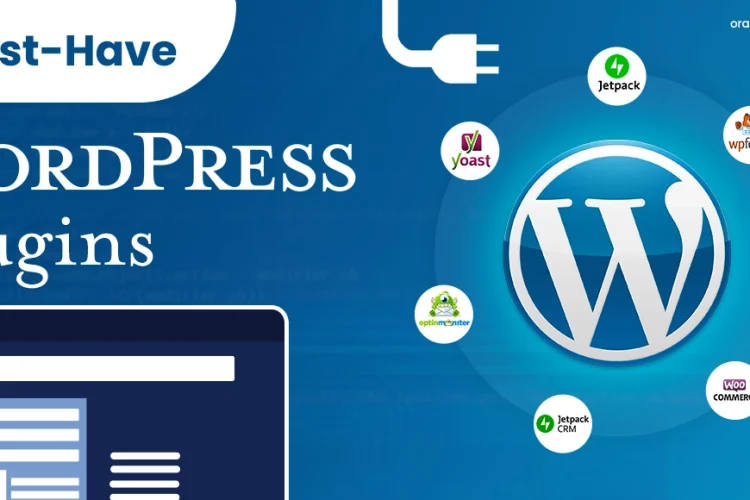Divya Stuti, with over 5 years of experience in Digital Marketing & Content Writing, has a knack for turning complex Marketing strategies, trends, and jargon...
Python’s popularity is rising in developing games and other industries. Python has multiple benefits for game development due to its strong community, user-friendly syntax, and vast library environment.
This article will look at Python’s suitability for developing games and assess its pros and cons. Additionally, we will share some advice and insights for effectively using Pygame and other game development tools.
Understanding its advantages and concerns will help you make strong decisions and fully use the language’s potential to create intriguing games, whether you are a beginner or a pro programmer.
Let’s delve into this topic without wasting any more time!
Is Python Good For Game Development?
Due to its straightforward syntax, abundant libraries and frameworks, adaptable object orientation, strong community support, dynamic typing, and compatibility with AI integration, game development using Python is a popular choice. It is perfect for game development, enabling more efficient and faster game production.
- Ability To Reuse Code: Python supports modular programming, which enables code reuse in creating games. Developers can save effort and time by producing simple modules or libraries to integrate into multiple gaming projects. As a result, the game development process is made more scalable and effective, and reusable code elements may be built.
- Easy To Understand Syntax: Python is an ideal option for newbies in game creation because of its simple syntax. Developers can quickly create and maintain code over time because of its clear and readable structure. It helps to increase productivity and smooths the learning curve.
- Simple To Debug: Python’s exceptional debugging features are only one of the advantages it has for developing games. Developers can find and fix bugs quickly in game code by using tools like Python Debugger (PDB). It is a perfect choice for developing games because of the simple debugging process, boosting productivity and guaranteeing fluid gameplay.
Advantages Of Python For Game Development:
Python is a great choice for game development when the project aligns with its strengths, such as rapid prototyping, 2D games, and casual games. It offers an accessible entry point to developing games and is also favored by developers striking a balance between game creation capabilities and ease of use. Python is an amazing choice for game development due to multiple reasons, including:
Clear and Simple Syntax:
For novices, Python is user-friendly and enables developers to create code quickly and effectively because of its simple and clear syntax. This simplicity fosters development iterations and lessens the learning curve.
AI Integration:
Python is an excellent option for building game AI features because of its uniformity and simplicity with AI packages. Developers can easily include Artificial Intelligence algorithms in their games to enhance gameplay and develop clever characters or adversaries.
Flexible Object Orientation:
Python’s support for flexible object-oriented programming allows programmers to divide their work into reusable, modular parts. This facilitates scalability, code reuse, and maintainability, which makes managing complex game projects easier.
Gaming-based Frameworks and Libraries:
Panda3D, Pygame, and Pyglet are just a few of the gaming frameworks and modules available in Python. These libraries provide pre-built functions and tools for game creation, allowing designers to create games more efficiently and quickly.
Significant Community Support:
Python has a vibrant and sizable developer community that contributes and share expertise to open-source projects. This community support makes sure game makers can access guides, materials, and answers to issues they could encounter when developing games.
Dynamic Typing:
Python’s dynamic typing is a useful asset in developing games, as it eradicates the requirement to declare variable styles in advancement. This feature lets developers prototype, experiment, improve efficiency, and test ideas swiftly in the game development process.
Cost-effective Development:
Python’s cost-effective feature is a notable advantage in game development. Python, as an open-source language, is freely available. It allows developers to harness its effective capabilities without the burden of licensing fees. This essential benefit contributes to significant cost savings throughout the game development process.
Cross-platform Compatibility:
Python’s cross-platform feature is a useful asset in game development, as it permits developers to develop games on one system and easily transfer them to some other platforms. This particular feature decreases development costs and especially broadens the potential player base.
Strong Efficiency:
Python’s powerful efficiency, simplified by its module importation capability, plays a vital role in game development. This feature allows developers to import only the important modules from outer sources, optimizing resource management and memory usage. As a result, games that are Python-powered can efficiently handle a high volume of coexisting inputs without experiencing freezing or lag, a critical requirement for action-packed games made with Python.
Disadvantages Of Developing Games In Python:
Why is Python not used for games? Despite its benefits, Python has some limitations and considerations which are vital for game development. Here are some of the few drawbacks:
- Memory Consumption: Python’s automatic memory management and dynamic typing can lead to more memory consumption than languages with manual memory management. This can limit game complexity and affect performance, requiring efficient memory usage.
- Performance Limitations: Python’s decrypted nature can impact its performance, especially for real-time or graphic-intensive games that demand high-speed processing. This drawback should be assessed when developing games that need optimal responsiveness and performance.
- 3D Graphic Support Is Limited: Python has fewer frameworks and libraries specifically designed for 3D graphics than languages like Unity or C++. While libraries like PyOpenGL and Panda3D provide 3D capabilities, the options are more limited.
- Mobile Performance: While Python provides cross-platform compatibility, creating high-performance games for mobiles can be tricky due to the additional overhead of the Python interpreter. Performance concerns become more crucial when targeting resource-constrained devices.
- Lacks Industry Standards: Python lacks the industry standard for game development. Many proficient game studios use other languages and engines like Unreal Engine, C++, and Unity. This may limit collaborating opportunities or access to particular tools and resources.
- Limitation Of Access To Low-Level Hardware Features: Python’s high-level nature and abstraction layers may limit direct access to low-level hardware features. It makes the optimization of games for particular platforms more difficult or takes full advantage of hardware capabilities.
Frameworks Of Python Game Development:
In this article, we have prepared a list of the top Python frameworks for game development one must know about, including:
Pygame
An open-source Python library is Pygame, which is used to make multimedia applications like built-in games on top of the excellent SDL library. This library is a mixture of OpenGL, C, Native, and Python. Pygame allows users to build games that are fully featured with multimedia programs using Python’s programming. It is extremely portable and runs on almost every platform and operating system. Some of its features are:
- Portable and simple
- Can easily use multicore CPUs
- A small amount of code is required
- Uses optimized C and assembly code for core functionality
Pyglet
Pyglet is an open-sourced multimedia library with cross-platform windowing for Python. It is an effective Python library that can be used to develop games and other visually rich applications on Linux, Windows, and Mac OS X. Pyglet supports Joysticks, windowing, OpenGL, loading videos and images, user interface event handling, and playing music and sounds. Pyglet runs under 3.5+ Python and also works on other Python’s interpreters such as PyPy. Some of its features are:
- Written in pure Python
- Flexible native windowing
- No installation or external dependencies requirement
- Built-in support for audio and images
PyKyra
Pykyra is one of the Python’s fastest game development frameworks. Also, it is based on both software and documentation localization (SDL) and the Kyra engine. Additionally, it supports MPEG video, sounds such as Ogg Vorbis, MP3, WAV, direct image reading, and more.
Kivy
Kivy is equipped with novel user interfaces like multi-touch apps. It is a cross-platform and open-source Python library for the fast development of applications. Kivy runs on Windows, iOS, Linux, OS X, and Raspberry Pi. It can also natively use most protocols, inputs, and devices, including Linux Kernel HID, WM_Touch, Mtdev, Mac OS X Trackpad and Magic Mouse, WM_Pen, and TUIO. Its library is GPU-accelerated, and it also comes with more than twenty widgets that are all very extensible.
PyOpenGL
One of the most common cross-platforms is PyOpenGL, with Python bindings to OpenGL and related APIs. In PyOpenGL, the binding is made using the standard types library. It corresponds with an extensive number of external GUI libraries for Python, including PyGT, Raw XLib, and PyGame, among others.
Panda3D
Written in C++ and Python, Panda3D is completely free-to-use and an open-source engine for real-time 3D games, experiments, simulations, visualizations, and more. It includes command-line tools for rectifying and optimizing source assets that permit users to script and automate the content production pipeline. Additionally, it supports many popular third-party libraries, including Assimp model loader, Bullet physics engine, FMOD sound libraries, OpenAL, and more.
Ren’Py
Written in Cython and Python, Ren’py is a cross-platform and free engine for digital storytelling that makes it simple to combine sounds, words, and images to develop visual novels and simulation games. Ren’Py support for the scripting language of Python that allows developers to work with difficult game logic. One of the most significant advantages is that it can run on almost every computer system.
Cocos2d
Written in C++, Objective C, and Python, Cocos2d is an open-source framework software that can be used to build apps, games, and other cross-platform GUI-based interactive programs. The Cocos2d family consists of Cocos2d-XNA, Cocos2d-x, Cocos2d (Python), and Cocos2d-JS.
Conclusion:
Python is a widespread programming language for game development due to its various benefits. Its broad library support and concise syntax make it simple to use and learn, letting developers iterate quickly and boosting productivity. Its community provides vital resources and assistance. While it has certain limits, its all-around benefits make it a good choice for developers, especially beginners in the game development area.
Frequently Asked Questions (FAQs):
- Can we develop games using Python?
Python offers a built-in library called Pygame, which is used to create the game.
- Is Python better than C++ for game development?
C++ is harder to learn than Python, but the potential for developing a game is unmatched.
- Can you make 3D games with Python?
Yes, 3D games can be made with Python using multiple game libraries and engines.
- Is Python or Java better for game development?
Between Java and Python, Java excels in developing apps and games for mobile devices.

Divya Stuti, with over 5 years of experience in Digital Marketing & Content Writing, has a knack for turning complex Marketing strategies, trends, and jargon into interesting and easy to digest blog posts. Whether she’s breaking down the SEO, Social Media or decoding campaigns, Divya knows how to make marketing feel exciting and easy to understand. Armed with a sharp eye for strategy and a storyteller’s instinct, she writes with clarity, creativity, and just the right dose of wit.
More Posts

